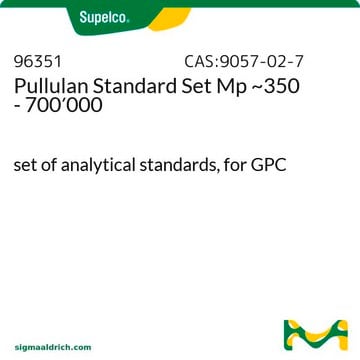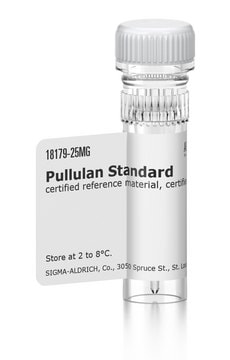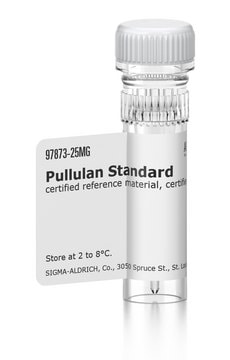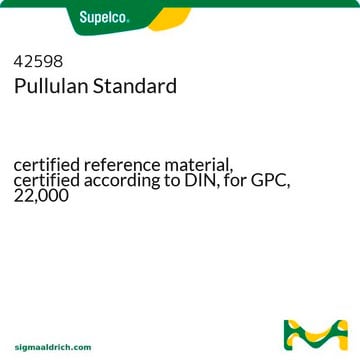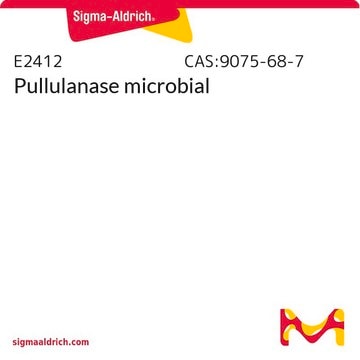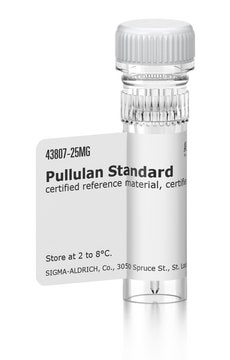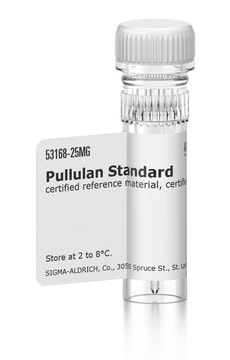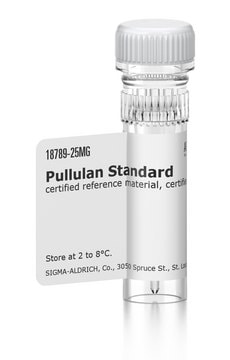The molecular weight range varies between 50,000-100,000 with a typical value being approximately 75,000.
Kluczowe dokumenty
P4516
Pullulan
suitable for substrate for pullulanase
Wybierz wielkość
402,00 zł
Wybierz wielkość
About This Item
402,00 zł
Polecane produkty
Formularz
powder or crystals
Poziom jakości
kolor
white
rozpuszczalność
water: 50 mg/mL, colorless to very faintly yellow
przydatność
suitable for substrate for pullulanase
temp. przechowywania
2-8°C
Szukasz podobnych produktów? Odwiedź Przewodnik dotyczący porównywania produktów
Opis ogólny
Zastosowanie
Inne uwagi
Kod klasy składowania
11 - Combustible Solids
Klasa zagrożenia wodnego (WGK)
WGK 3
Temperatura zapłonu (°F)
Not applicable
Temperatura zapłonu (°C)
Not applicable
Środki ochrony indywidualnej
Eyeshields, Gloves, type N95 (US)
Wybierz jedną z najnowszych wersji:
Certyfikaty analizy (CoA)
Nie widzisz odpowiedniej wersji?
Jeśli potrzebujesz konkretnej wersji, możesz wyszukać konkretny certyfikat według numeru partii lub serii.
Masz już ten produkt?
Dokumenty związane z niedawno zakupionymi produktami zostały zamieszczone w Bibliotece dokumentów.
Klienci oglądali również te produkty
Powiązane treści
Dextrans are polysaccharides with molecular weights ≥1,000 Dalton, featuring a linear backbone of α-linked d-glucopyranosyl repeating units.
-
We obtained Pullulan about 2 weeks ago, we are going to make nanoparticles for gene delivery and I would like to know the molecular weight of the pullulan before started to experiments.
1 answer-
Helpful?
-
Active Filters
Nasz zespół naukowców ma doświadczenie we wszystkich obszarach badań, w tym w naukach przyrodniczych, materiałoznawstwie, syntezie chemicznej, chromatografii, analityce i wielu innych dziedzinach.
Skontaktuj się z zespołem ds. pomocy technicznej